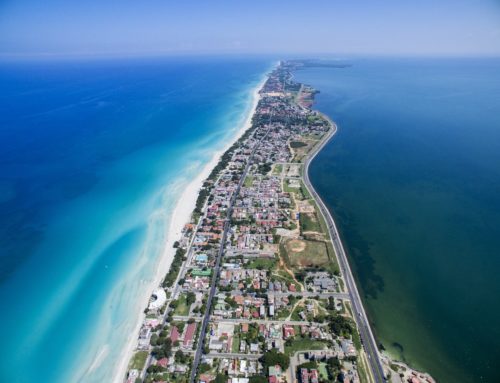Stability Landscape
A stability landscape is a mathematical model representing the various stable and unstable states that a system (such as an ecosystem) may occupy. The stability landscape is based on models derived from nonlinear systems dynamics, in particular, that of a state space(also called a phase space) and attractors. A state space is a 1, 2, 3 or more dimensional space that represents all the states to a given system at any given point in time. A “basin of attraction” is a region in the state space in which the system tends to remain cycling through unless perturbed significantly. The various basins that a system may occupy, and the boundaries that separate them, are known as a stability landscape.
A simplified model of the stability landscape is often used in a non-technical context, where an analogy to a ball in a bowl is made to provide a practical description of the stability landscape. Here a ball, often representing an ecosystem or some socio-ecological system, exists on a surface where any point along the surface represents a possible state. In the simplest model, the landscape consists of two valleys separated by a hill. When the ball is in a valley or a “domain of attraction,” it exists in a stable state and must be perturbed to move from this state. In the absence of perturbations, the ball will always roll downhill and therefore will tend to stay in the valley (or stable state).
Changing Landscapes
These attractors within the landscape can change over time given internal or external alterations. For example, many lakes occupy a stability landscape with essentially two basins of attraction: one that is initially wide and deep, characterized by clear water, and a smaller one characterized by turbid water. Agricultural practices within the larger socio-ecological system, through application of fertilizers and manure, have gradually increased the phosphorus content of soils in some watersheds can change this with the emergence of a new basin of attraction while the first two are diminished. Both exogenous and endogenous drivers can result in changes in the number of basins of attraction within the landscape, changes in the positions of the basins within the state space, changes in the positions of the thresholds between basins or changes in the depths of basins. Where depth is a measure of how difficult it is to move the system around within the basin, with steep sides implying more and stronger negative feedback loops where greater perturbations or management efforts are needed to change the state of the system. Restructuring the system changes its position within a basin relative to the edge and defines its precariousness or capacity to move into a new basin.
Resiliency
The stability landscape model is often used to understand the possible effects of human impact on an ecosystem
The stability landscape gives us some basic model for approaching the subject of socio-ecological resilience in a formal fashion. Resilience is the capacity of a system to deal with disturbance and reconfigure while undergoing change so as to still retain essentially the same functionality and structure. This can be interpreted as the strength and number of the negative feedback loops creating the likelihood of the system remaining in the same basin of attraction given some perturbation.
When we ask what is the maximum amount the system can be changed before losing its ability to recover; we are essentially talking about the width of the basin of attraction. Wide basins mean a greater number of system states can be experienced without crossing a threshold. We can talk about resistance as the difficulty of changing the system, this is then related to the topology of the attractor, deep basins of attraction mean that greater influences are required to change the current state of the system away from the attractor. Within this model we can talk about the precariousness of the system which would correlate to the current trajectory of the system, and how close it currently is to a limit or “threshold” which, if breached, makes recovery difficult or impossible.




























